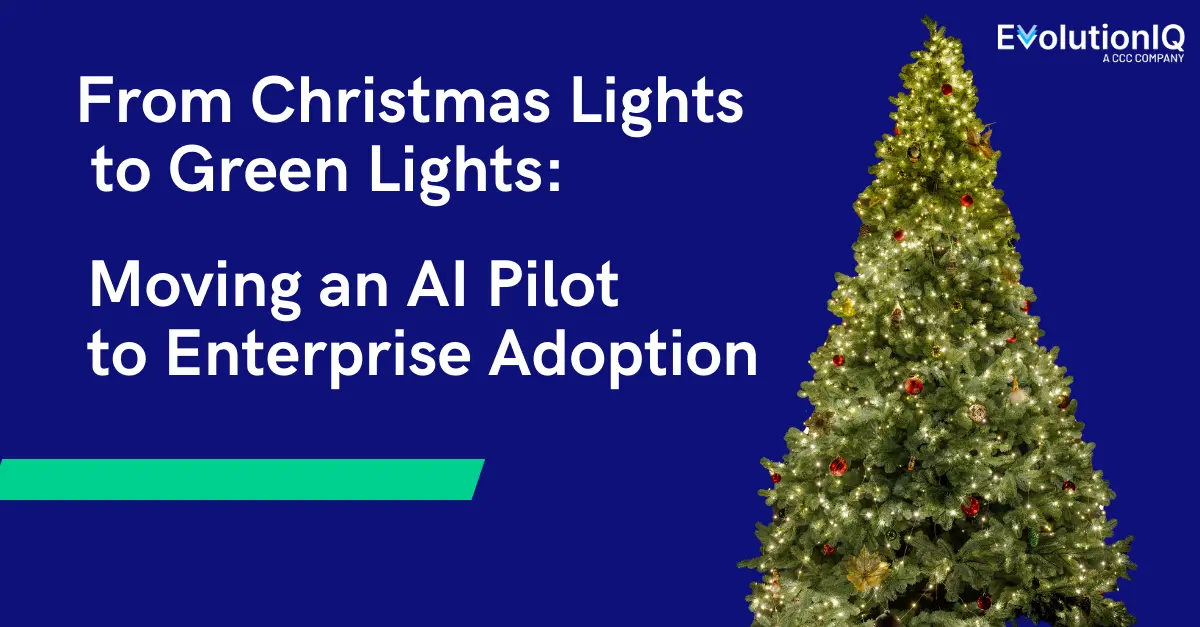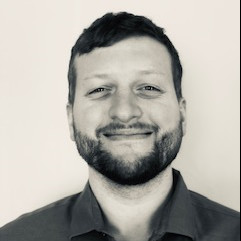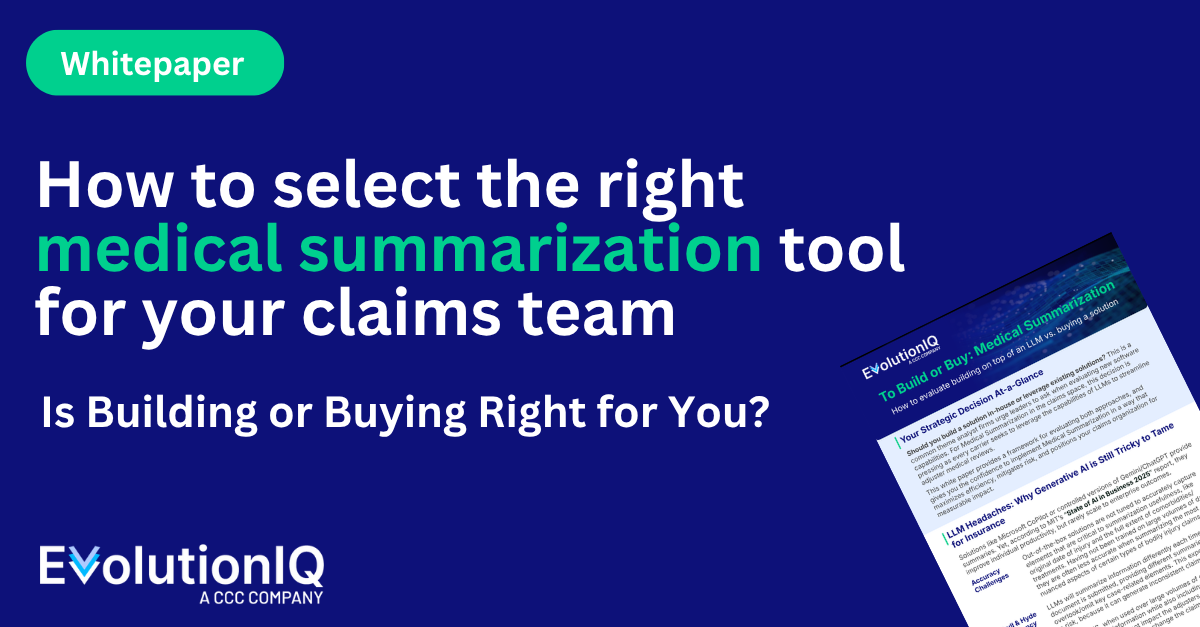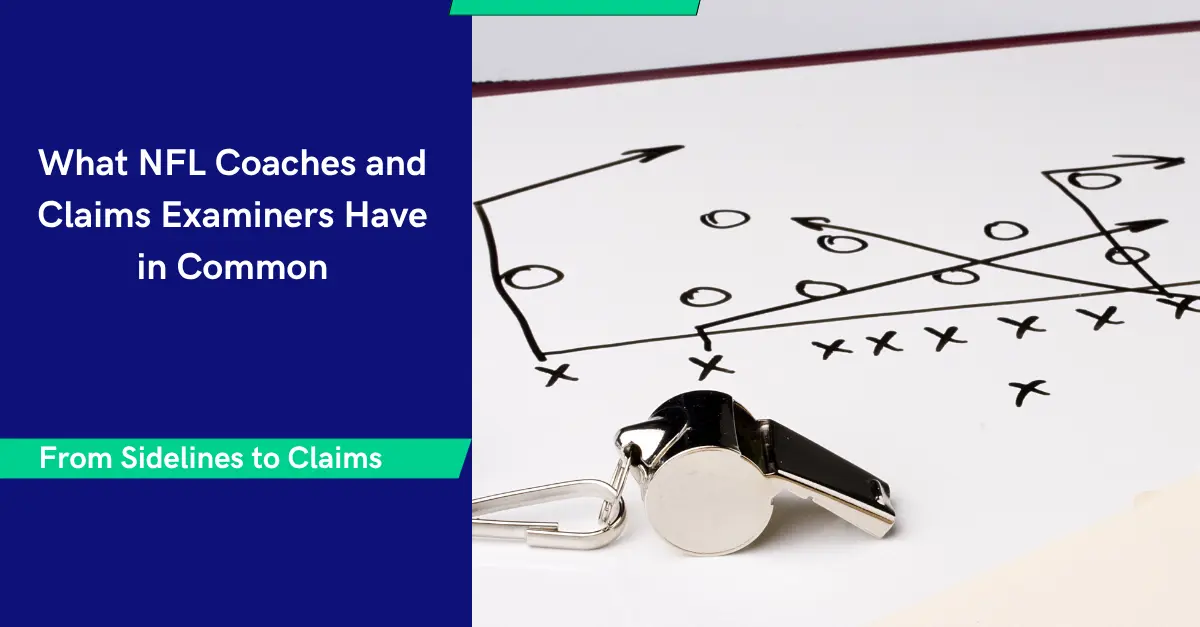5 Questions With Our Applications Engineering Expert: Erin Driggers
Fueling EvolutionIQ’s advanced software is an entirely new class of artificial intelligence but those highly complex algorithms aren’t what a user sees. Rather, …


Fueling EvolutionIQ’s advanced software is an entirely new class of artificial intelligence but those highly complex algorithms aren’t what a user sees. Rather, busy claims examiners and adjusters harness the power of AI via an intuitive, easy-to-use web application that allows them to seamlessly find the right claim at the right time. The group responsible for translating the machine learning outputs into an interface that anybody can easily use is our 12-person Application Engineering Team, led by Erin Driggers. Prior to joining EvolutionIQ, she spent more than two decades in software development where she led customer implementation teams and user experience at Blue Yonder (formerly JDA Software, Inc.) and most recently headed up the cloud engineering team at AI platform integrator Splice Machine.
What is the primary focus of your team?
I lead the Application Engineering team and we’re responsible for the web application what a user sees and interacts with daily on their desktop and that ultimately gets displayed to claims examiners, adjusters, and managers. We take the amazing work that our Machine Learning Team is doing and put it into terms that the average person can understand basically translating machine learning into plain English. What I really love is hearing the Machine Learning Team engineers speak, because they have these great ideas but often it’s like way up in the clouds. But as applications engineers, we can take what they’re thinking and bring it down into something that would be meaningful and actionable to the end-user. We also work closely with EvolutionIQ’s Product Team and Client Strategy Team, and incorporate feedback they’re getting from customers, such as about usability or functionality they would like to see, or ways we can maximize the interaction with the technology.
How is your work different from web application teams in other industries?
The web application technologies that we’re using can move from any organization and they’re the kind that people use everyday, like a user-interface on Amazon or other retail sites. But what’s different for us is that the insurance industry really does require getting extreme familiarity with insurance terms and concepts. You really have to understand a claims life cycle in order to be able to help build a website that claims examiners and adjusters can understand and use.Â
What are some examples of the team’s work?
We have a number of categories in which we work. For example, there’s the category of usability, where we make it easier for claims examiners to find claims that they want to look more closely at, or that they should look at because something has changed in the data. We’ve made a lot of changes in the usability area that I think have helped make it much easier for busy claims teams to use. We’ve also done a lot of what’s called A/B Testing, which is where we implement something one way and test it and find out if a customer is using it in the way we expected. And if not, we develop a different way for the user to engage with it. For example, with the predictions that the software makes, we initially just showed a score, with that number being the main driver to acting on a claim. But after testing, we’ve now added a timeline explanation bar next to the score that clearly indicates the rationale because we think it’s easier for the user to understand.
What types of new projects are you working on now?
One area I’m very excited about is expanding the types of users that would use our application. For example, we’ve been very focused on claims examiners and adjusters. But we’re now adding sections to the application that are geared more for claims managers and department leaders, so they can say, Hey, does my team have a balanced workload? Is my team logging into the application and using it? Are they clicking on the buttons they should be clicking on to get the maximum benefit from the software’s claims guidance recommendations? These improvements will help give claims executives the data they need to make sure their teams are getting the maximum utility from the software and its guidance.
What’s a serious fact about you and a not-so-serious one?
On the serious side, I’m self-taught on most things and I’m currently learning about computer-brain interfaces, like a headset that can move a computer mouse without using your hands, or the impact that next-generation wearable technologies are having. On the not-so-serious side, my husband and I live in South Florida and we’re kind of nature-dorks, so we actually got married in a canoe. My husband came from one direction in a canoe with his best man and I came from the other with the wedding party and we met in the middle of a lake and got married.
- Read our post, 5 Questions With Our New Customer Expert: Palantir Vet Kipp Teamey
- Read our post, 5 Things that Shot Us onto Inc. Magazine’s Best Workplaces’™ List
- Hear straight from EvolutionIQ’s three founders in,Why We Chose to Harness the Power of AI for Insurance












